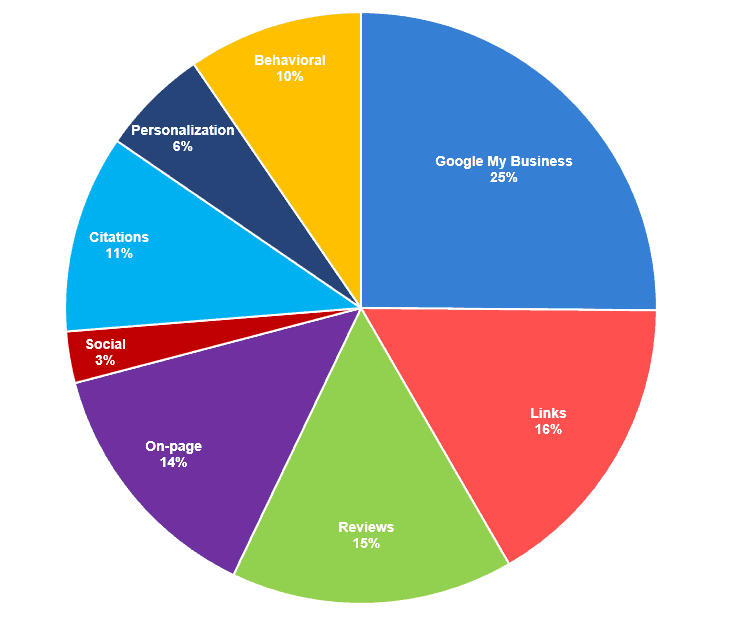Businesses have long warned of a massive increase in consumer control: a new age dominated by the highly informed, highly discerning buyer, capable of controlling the entire purchase journey from start to finish.
But it appears healthcare is only just now waking up to this phenomenon.
Beginning in the early days of the pandemic, medical “customers” suddenly found themselves with an influx of health concerns and a lot of time on their hands to research and prepare before settling on a course of treatment.
Yet it’s likely this COVID-era development was just the latest phase in an ongoing industry transformation characterized by a rise in deductible fees, as well as an uptick in medical costs.
But whether the change came before the pandemic or after, the result was the same: a new breed of empowered healthcare consumers, forever in search of seamless, individualized experiences made popular by online vendors and big-box retailer brands.
It’s what’s become known as the “consumerization of healthcare,” and its “patient-first” principles are the key to healthcare marketer success in 2024.
In other words: If you’re a marketer hoping to gain any ground in the healthcare field over the next 12 months, your patients will have to take front and center.
Ramon Soto,
“I actually think [healthcare marketing is] probably 10 years behind the times in terms of our sophistication and approach, and I don’t think anybody benefits from that… So we have a lot of work to really rethink how we go to market, how we tell our story, how we engage with consumers… We have to get to a very different place. It’s a call to arms.”
Senior VP, Chief Marketing and Communications Officer
Northwell Health
Your industry has fallen behind. And the time for catching up is now.
Here are seven critical patient-first trends to internalize for the new year.
1. Reputation management
With more and more prospects conducting their own digital research, reputation management has gotten very, very real.
“But I have no control over patient reviews!” you say.
Yes and no. You might not be able to change what people say about your practice, but you can guide the overarching conversation by spotlighting positive patient experiences and engaging in social and communal outreach.
As for reviews themselves: you have to make them available. And you have to proactively cultivate them whenever you can. Why?
- 85% of consumers look to online reviews just as much as they do recommendations from within their social circle
- 59% of prospective patients make reviews a significant part of their provider selection process.
Also, reviews count for a lot when it comes to ranking on Google[EH1] .

So how do you make sure your online reputation looks good (and stays that way)?
Some ideas:
- Ask for patient feedback. Seek out “success story” patients and ask if they’d consider reviewing their experience in a video or written interview.
- Leverage your email or text automation processes to encourage new patients to post impressions on healthcare platforms like Zocdoc or Vitals.com (or more widespread platforms such as Facebook or Google My Business).
- Set aside time for monitoring and responding to reviews directly. Bad reviews won’t help your cause, but they’re not irreparable. Demonstrate to web searchers that your practice is willing to learn from and/or rectify its mistakes by fielding requests from disgruntled patients on public forums.
- Stay on top of KPIs that correspond to “social proof,” such as likes and shares (which Lee Aase, former director of the Mayo Clinic Social Media Network, once dubbed the “Mother of All Metrics”).
2. Personalization
It’s territory we’ve covered before, but it still holds true for 2024 and beyond.
As far back as five years ago, healthcare consumers were listing personalized interactions with providers as a top priority. And yet, in 2020 an estimated 71% of healthcare service providers still performed at subpar levels for smoothness of operations regarding patient interactions and communications.
Techniques for personalization can help your practice buck this downward trend.
Tips for helping prospects feel less like a number and more like a valued customer include:
- Integrate prospect/patient information sources into one easily managed data headquarters to facilitate better segmentation and greater insight into patient histories.
- Map your existing content (and subsequent content rollouts) to corresponding points in the patient’s journey. This enables you to better catch consumers at the right moment for conversion.
- Help institute a company-wide culture of compassion by listening to patient feedback and extending empathy and support toward patients’ family and friends.
Above all, remember to remain flexible, as each prospect represents a different set of needs, wants, and health concerns.
I’ll wrap this idea with the words of Don Stanziano, chief marketing, and communications officer and digital engagement leader at Geisinger Health:
“There is no one best approach because every customer is on their own journey… You have to tailor your content and your channel selection to meet the needs of customers at every stage of the journey. If you have the right mix of content distributed across the right channels, the customers will tell you where they are.”
3. Privacy protection
Thought COVID put privacy laws on hold?
Think again.
While some restrictions for remote communications were eased in light of the pandemic, regulations for the protection of electronic protected health information (ePHI) remain alive and well.
As we move into year three of the COVID era, you’re still very much required to remain compliant with a variety of crucial industry directives including:
- The Health Insurance Portability and Accountability Act (HIPAA)
- Centers for Medicare & Medicaid Services (CMS) standards for electronic health records (EHR)
- The Health Information Technology for Economic and Clinical Health Act (HITECH)
- New iOS privacy protections for consumers (not a directive, but still a restriction you should be aware of)
Ensure all systems used for storing and disseminating prospect/patient information can meet the necessary requirements for compliance under these guidelines (which—spoiler alert—can and will change over time).
Also, keep in mind full compliance might necessitate programs for data encryption as well as a system for regular security audits.
[Note: Going into business with a third-party vendor? Make sure they can commit to a business associate agreement (BAA) for HIPAA-compliant procedures before signing them on.]
4. Omnichannel marketing
As patients become more empowered, healthcare marketing will become an increasingly multifaceted—and multi-channeled—game.
You’ve heard of the sales funnel? Now, meet the sales cyclone: a place where consumer priorities are in constant flux and buyers’ journeys never follow a linear pattern. Curious prospects can jump from website to whitepaper, Facebook, YouTube, appointment booking, and back again.
And your voice and value proposition must remain consistent throughout.
Stay ahead of the storm with an all-encompassing marketing plan that involves both inbound and outbound strategies for healthcare marketing.
Next, build a content arsenal that speaks to every possible prospect need, from preliminary research articles to “What to Expect at Your First Appointment” newsletters.
Finally, be sure your strategy covers a diverse network of media channels so you can find and accommodate prospects at every turn.
An optimal omnichannel experience will ideally include a mix of:
- social media outreach
- long-form content (blog posts, case studies, etc.)
- text and call center services
- email automation
- pay-per-click ads (PPC)
- informative video
- search engine optimization (SEO)
- TV and radio
- in-person events
…and more.
The point is to be available to your prospects in the right place, at the right time. To do this, research your desired audience and figure out what they’re looking for, as well as where they “live” (i.e., spend most of their time).
Then be ready to meet them there, armed with actionable info to help propel them forward.
5. The growth of telehealth
Actually, it’s not so much a wave as it is a whole ocean.
And though interest in telehealth appointments is likely to rise and fall with each new COVID variant, telehealth as a whole—which incorporates everything from remote doctor visits to EHR management—is a new medical reality, permanently woven into the fabric of the industry.
Indeed, telehealth utilization appears to have hit a post-pandemic plateau of 38 times what it was in the days before COVID, meaning telehealth adoption is still in the midst of a massive spike. And as we head further and further into the digital age, telehealth will no doubt remain a large part of how practices do business.
We’ve covered marketing for telehealth at length in a recent series of posts, but here are a few major points to carry with you into the new year:
- When building a telehealth marketing plan, consider how telemedicine adds unique value to your specific practice (and your most coveted audience) before you proceed.
- Make sure your telehealth services are well represented with an accessible, impeccably designed website.
- Enhance your inbound strategy to include up-to-date content on the benefits of telehealth adoption.
- Don’t overlook telehealth when deciding on your outbound mix. Paid ads will help attract promising prospects who might not even know telehealth exists.
- Choose your tools carefully. Telehealth is still governed by the laws of privacy and accountability, so compliance is non-negotiable. Plus, you’ll want to ensure your marketing systems can integrate well with any clinic-wide telemedicine platforms (integration will allow for more accurate performance measurement and KPI tracking).
6. Digital transformation
Obviously, the rise of telehealth will translate to an increase in technology.
And to keep up with our tech-driven times, every healthcare marketing team will need seamless front- and back-of-house solutions for (a) communicating with patients, (b) transmitting crucial medical info, and (c) tracking and synthesizing engagement data. (This applies to all providers, but it’s particularly important for practices hoping to expand in the coming year.)
Here’s a small checklist of tools to employ in 2024:
- CRM
A robust customer relationship management (CRM) solution that enables storing and segmentation of patient information and facilitates automation for basic tasks such as email and booking. The best CRMs will also provide detailed reporting on patient preferences and engagement trends. - A tool for EHR access and/or integration
Both patients and providers should have 360° visibility into all points of care via an optimized platform designed for easy data search and retrieval. - Appointment booking software
This is a must since research suggests a full 42% of prospective patients prefer digital booking to scheduling an appointment over the phone. - Call tracking and analytics.
Keep in mind the phone isn’t dead. As calls come through, it will help to have a solution for monitoring voice interactions to uncover consumer behavior patterns and help fast-track conversions.
7. Search engine optimization
“When people areseeking healthcare information or treatment, they turn to Internet searches, and [you must do] a phenomenal job of creating content that is actionable, helpful, and relevant to people dealing with medical issues that [appear] in their search results.”
amanda todorovich,
Executive Director, Content Marketing
Cleveland Clinic
SEO is the granddaddy of digital marketing. And in a post-COVID, work-from-home world, digital is more or less your only playing field.
In the new year, be mindful of SEO best practices and check in on the latest algorithms as often as you can. For example: 2024 SEO forecasts seem to be shifting in a local direction, meaning your New Year’s SEO keyword resolution should focus specifically on the needs and pain points of your surrounding community.
If you don’t keep up, your competition will, and you’ll risk ranking beneath them.
Other SEO factors to think about in 2024:
- Signals, which can improve your search engine rankings (these include reviews and citations/links on third-party sites).
- Higher word counts (1000+), which can help with online ranking and content traffic, as well as industry credibility.
- A streamlined, navigable, engaging UX, which will assist you as search algorithms begin to focus more on context (as opposed to basic keyword verbiage).







